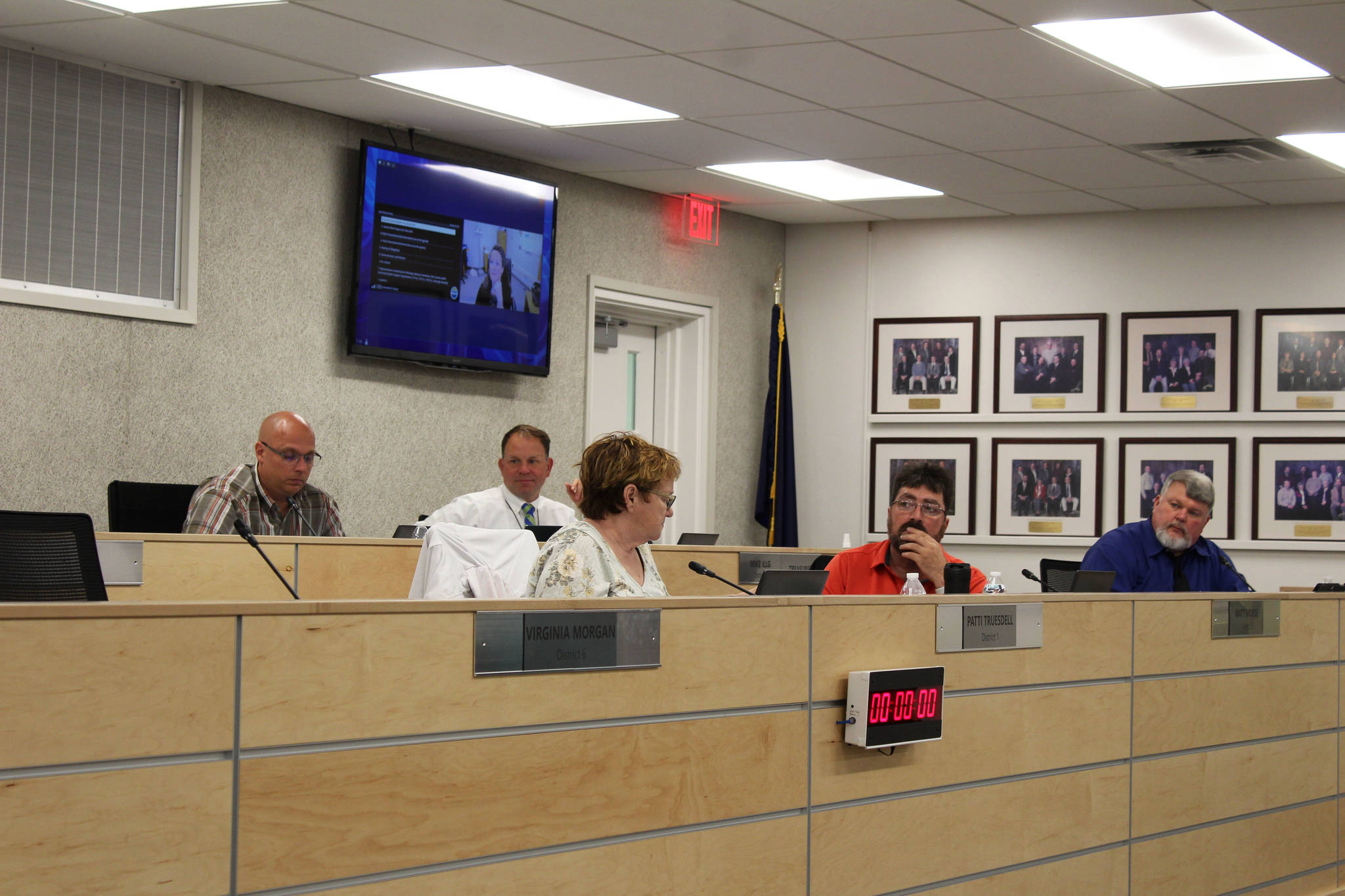Flying drones, tie-dye and esports were among the activities offered at programs hosted by the Kenai Peninsula Borough School District this summer. The school district used federal COVID-19 relief money to fund the programs.
According to KPBSD Director of Elementary Education Eric Pederson, who spoke about the programming during the KPBSD’s July 12 Board of Education meeting, programs were geared toward student literacy, physical and social emotional wellness, STEAM, alternative high school credit recovery and traditional credit recovery. STEAM stands for science, technology, engineering, art and mathematics.
The “Literacy Boost” program, for example, provided continued instruction to district students in kindergarten through third grade who received intervention services during the school year. That program offered four hours of instruction four times a week and saw 25 certified teachers work with 252 students.
Pederson said that in crafting summer programming, the district wanted to offer acceleration and enrichment in addition to remedial work programs.
“It wasn’t all about catching up on mastering the concepts from the past semester but rather preparing students for the present and the future,” Pederson said.
He added that district teachers were attuned to student’s needs coming out of the most recent school year and that they were given the opportunity to pitch summer programming ideas to the school district via a process he compared to ABC’s Shark Tank.
“This district has some really creative and dedicated teachers working for them,” Pederson said.
Natalie Kant, who is a counselor at Skyview Middle School, directed two overnight camps held at the middle school, including a Drone Camp and a Computer Science Camp. Kant shared survey responses from kids who participated in the camps that were positive and said the programs encouraged “fun” learning through unique activities.
“Over my 30 years of teaching this is the funnest thing I’ve ever put together,” Kant said.
The summer programming made possible with federal COVID funding is in addition to a summer work program that was offered for students with disabilities. That program, made possible through a partnership between the district and the Alaska Division of Vocational Rehabilitation, placed participating students in local businesses to get hands-on work experience.
Olivia Orth, who teaches special education at Soldotna High School and helped lead the program, said the program worked with students to address everything from showing up to work on time, to what to wear to their first day on the job, to how to fill out important paperwork. At the end of the week, Orth said they come together to talk about what went well and what was challenging.
In all, the school district has received three rounds of federal COVID-19 relief funding, which comes from the Elementary and Secondary School Emergency Relief, or ESSER, fund.
KPBSD received about $2.3 million in original ESSER funds under the federal CARES Act, just over $9 million in ESSER II funds through the Coronavirus Response and Relief Supplemental Appropriations Act and about $20.4 million in ESSER III funds through the American Rescue Plan Act. Twenty percent of ESSER III funding, or about $4 million, must be set aside for learning loss recovery.
KPBSD Finance Director Elizabeth Hayes said Monday that the first round of ESSER funds was spent during Fiscal Year 21, which started on June 30, 2020 and ended on July 1, 2021, including on summer programming. In contrast, ESSER II and ESSER III funds will be over the next three years. ESSER II funds must be spent by June 30, 2023, and ESSER III funds must be spent by June 30, 2024.
The KPBSD Board of Education’s full July 12 meeting can be viewed on the district’s media page at media.kpbsd.k12.ak.us.
Reach reporter Ashlyn O’Hara at ashlyn.ohara@peninsulaclarion.com.

